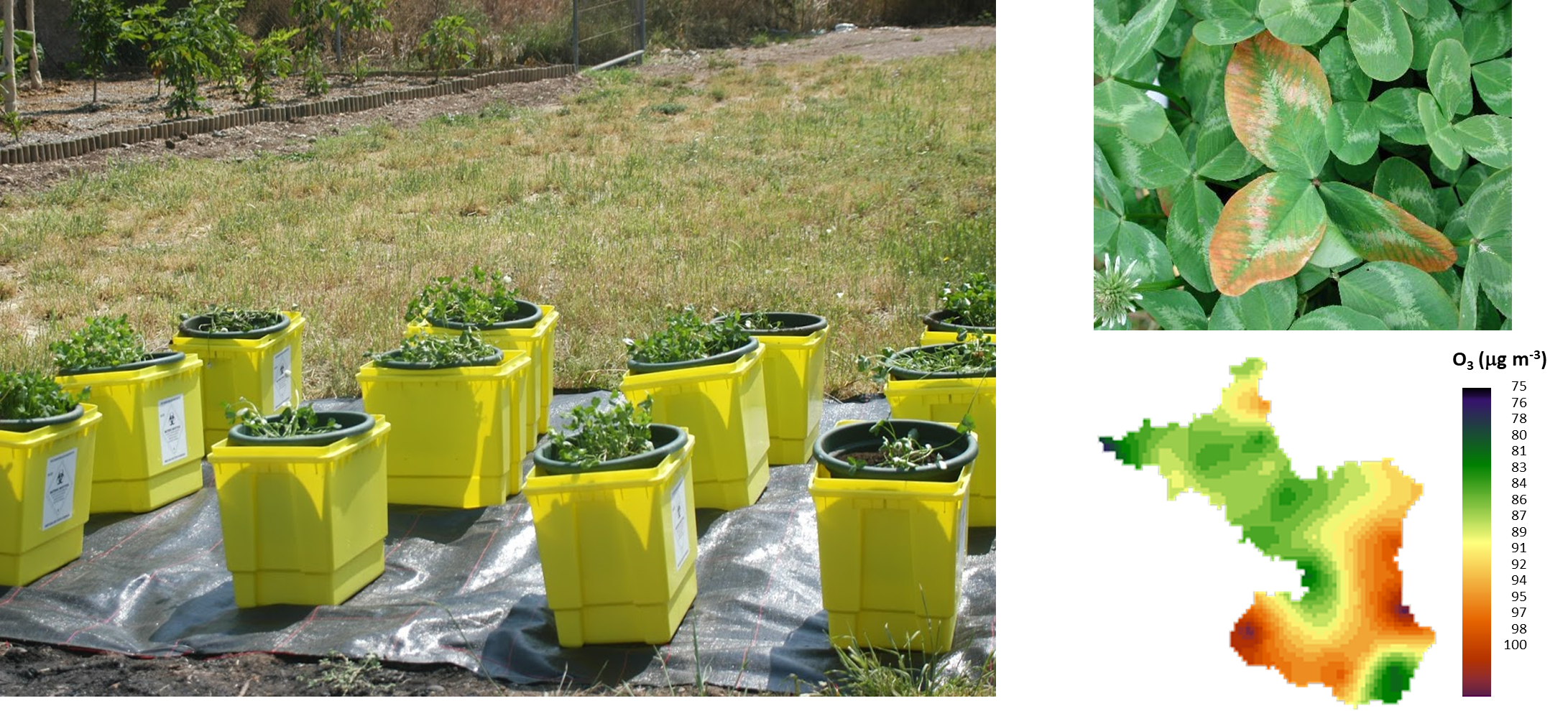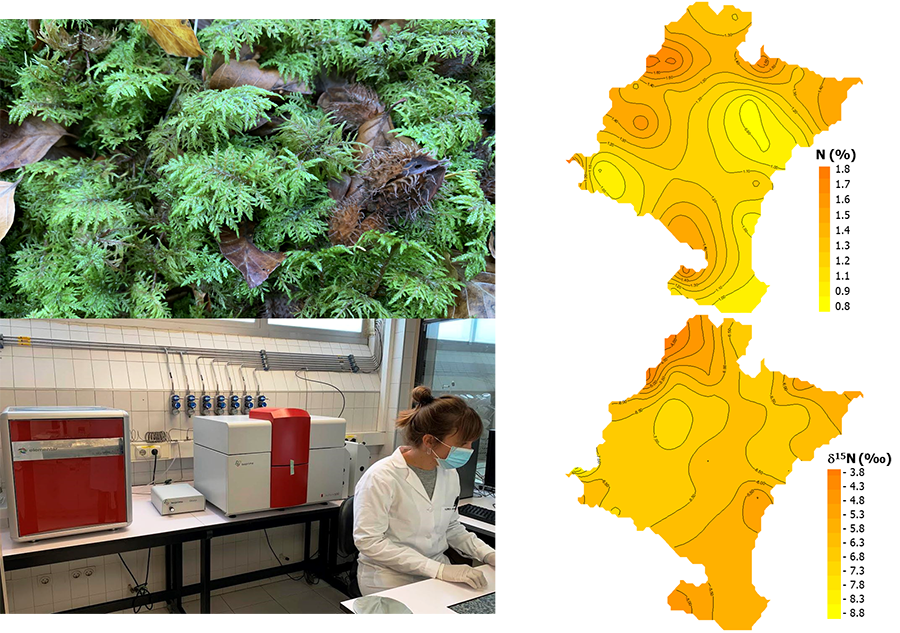 Air pollution and vegetation
Air pollution and vegetation
The ICP-Vegetation is an international research program that investigates the impacts of air pollutants on crops and (semi-) natural vegetation.
Report to group from work on Effects (WGE) of agreement on Long-range Transboundary Air Pollution (CLRTAP). The program focuses on the impacts of ozone pollution on vegetation and atmospheric deposition of heavy metals, nitrogen, and persistent organic pollutants (POPs) on vegetation. BIOMA researchers joined this program in 1998.
The biomonitoring of the effects of tropospheric ozone on crops is based on the combination of the response to ozone, both in biomass production and in development of foliar symptoms, of two biotypes of white clover(Trifolium repens) selected for their sensitivity and resistance to this pollutant. The campaigns carried out in Navarra have shown no effects on biomass production, although these programs of study were not carried out in the south of the province, where ozone levels are higher and usually exceed the critical loads for this pollutant.

The study of the deposition of heavy metals and nitrogen in ecosystems is carried out by means of employment of bryophytes(Hypnum cupressiforme), which act as bioaccumulators of these compounds. The results obtained have made it possible to identify the lithogenic or anthropogenic sources of the heavy metals analyzed. The high concentrations of the elements V, Cr, Ni and As recorded at some points are related to the nature of the parent material where the mosses grow, mainly formed by shales, sandstones, basalts and lutites. However, the elements Zn, Cd and Pb show a clear relationship with anthropogenic activities, reaching higher levels in the most industrialized areas of Navarra and in other points influenced by pollutant emissions from nearby regions with high industrial activity (Basque Country) or from more distant areas such as northern Europe (Pyrenees).
As has occurred in Europe, the deposition of heavy metals has decreased significantly in ecosystems in recent years, a fact related to the decrease in industrial activity, the implementation of pollution control technologies and the entrance enforcement of more restrictive legislation on the emission of pollutants into the atmosphere.
Regarding nitrogen content in mosses, most of the sites sampled in Navarra can be considered rural or background sites and no temporal variations in nitrogen deposition have been recorded between the different campaigns carried out.

The isotopic call number 15Nallows differentiating nitrogen coming from combustion sources (high values) from nitrogen generated by agricultural activities (more negative values). The analysis carried out with the samples of Hypnum cupressiforme has made it possible to detect areas with very low values of15N,associated with NH3 emissions from pig farms, and other points where nitrogen is associated with combustion sources. This subject analysis is very useful for identifying pollutant sources and adopting possible measures for management.
